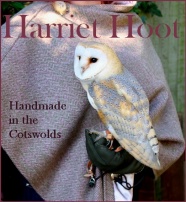Hunting Horses & Tack
Horses
 Now you have got yourself fully kitted, it’s time to consider your horse.
Now you have got yourself fully kitted, it’s time to consider your horse.
 The most important quality is safety. Your horse should go quietly in a group, stop without a fight and stand patiently. You should also be able to wait your turn at jumps and jump without refusals.
The most important quality is safety. Your horse should go quietly in a group, stop without a fight and stand patiently. You should also be able to wait your turn at jumps and jump without refusals.
Your horse should be clean, neatly trimmed and properly tacked. You may consider the use of studs as the weather worsens. Horses can be left natural during the Autumn season but otherwise should be plaited or hogged. Plaits should be individual and not running. Native pony owners may prefer not to plait. Clipping is advisable but hair on the legs can offer more protection.
If your horse is new to hunting, you should tie a green ribbon in its tail. If it might kick, tie a red ribbon.
To avoid kicking incidents you should always leave sufficient distance between you and other horses and hounds. You should always point your horse’s head towards hounds, never the rear, there are those who will remind you in 10 years about your horse kicking a hound the first time out.
Tack
 Your tack should be simple and appropriate for the field. It should be clean, serviceable and reliable. Breast plates are a good idea for both comfort of the horse and safety of the rider. Ensure your bit provides sufficient braking power, the circling technique may not be feasible and could present a danger to you and others.
Your tack should be simple and appropriate for the field. It should be clean, serviceable and reliable. Breast plates are a good idea for both comfort of the horse and safety of the rider. Ensure your bit provides sufficient braking power, the circling technique may not be feasible and could present a danger to you and others.
Natural wool or numnahs should be used. Best to avoid square pads, sheets, colours and names and initials. Tradition suggests saddles should be brown leather but check with your hunt if synthetic or black saddles are acceptable.
Boots are acceptable but avoid garish colours.
It may seem somewhat odd to go to such effort dressing up only to be covered in mud immediately you leave, however by looking smart you are honouring the generosity of those who have invited you to ride over their land along with the skill and commitment of the hunt staff.

Last Updated: September 2013














